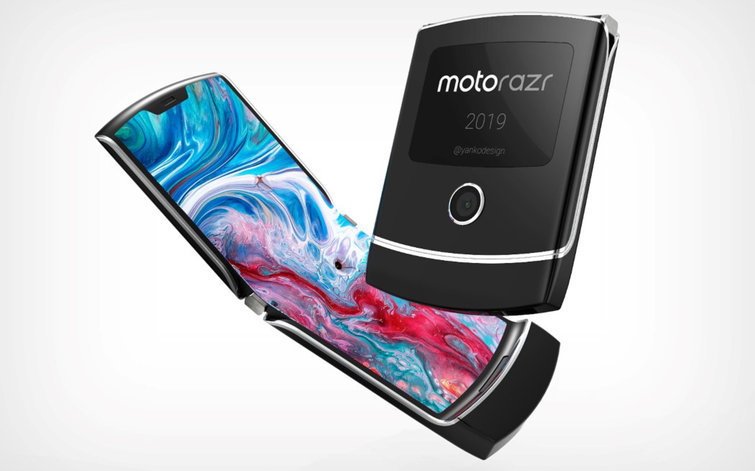Despite Galaxy Fold Debacle, Foldable Phones Will Rise
The Galaxy Fold’s delay and screen issues are a big setback for the category, but it should not be a death knell.
I’ve been using the Galaxy Fold for a week, and its screen is in tact! But Samsung’s reputation right now is severely damaged following the delay of its first foldable phone.

In the wake of reports of broken displays on early Galaxy Fold review units, Samsung has decided to delay the phone’s April 26 launch. And there’s no firm timetable for a new release date, with the company saying only that it would it announce one “in the coming weeks.”
“I think it’s a very smart move for Samsung to take a step back and make changes so that when actual customers get their hands on the Fold they will have a positive experience,” said Avi Greengart, founder and lead analyst for Techsponential.
MORE: 7 Most Surprising Things About the Samsung Galaxy Fold (Good and Bad)
For foldable phone skeptics, this predicament is exactly what they predicted. I’ve been hearing stuff like “who the hell needs a foldable phone” and “who are these things for” for months. But despite the well-deserved fallout from the Fold’s failure to launch, I still believe this category has a bright future.
Why do I say that? Because there are parts of the Galaxy Fold I really like, especially the ability to transform from phone to tablet mode. With a 7.3-inch screen when unfolded, the Galaxy Fold gives me iPad mini-like real estate for reading articles, watching Netflix and getting real work done in Google Docs. It’s almost like Samsung figured out a way to cheat the laws of physics.

Having the ability to run three apps on screen at once is another plus, and Samsung deserves credit for working with Google to optimize Android to make this process pretty seamless. You just drag in more apps from the right side of the screen.
"I see this more as a glitch for Samsung rather than a black eye for the category," said Carolina Milanesi, an analyst with Creative Strategies. "Even reviewers with issues praised the Fold and the new workflows it allowed."
Nevertheless, the Fold’s delay does at least temporarily put a dark cloud over the entire foldable phone category, which is a shame because what’s coming looks like it has real potential.

Take the Huawei Mate X. While it won’t be sold here due to very real political tensions between the company and the U.S. government, the design itself impressed us even more than the Galaxy Fold during our hands-on time with the unit at Mobile World Congress in February. The outward folding design means you always have a larger display in front of you at 6.6 inches, compared to 4.6 inches for the Fold. I also prefer the Mate X’s camera bar, which puts all the lenses in one place.
Xiaomi is also working reportedly working on a foldable phone called the Mi Fold that the company has only shown in a tease promo video. It looks like a tablet when it’s open, but you fold back the left and right sides back to enter phone mode. It looks fairly intuitive to use, but there’s no timetable for a release date or price.
Not all foldable phones are going to be huge phablets, either. The new Motorola Razr, which has been confirmed by the company, will reportedly be a clamshell when closed, opening to reveal a 6.2-inch display. What’s not clear is how the Razr will work when closed. Will you even be able to interact with the external display? With this kind of design, I think an always-on display with notifications would be fine, but I would at least like to skip music tracks, too, with a tap.

Last but not least, LG says that it is investigating rollable displays for upcoming phones, which could enable an entirely different kind of design. One option could be a vertical orientation like the new Razr, which mean it would fold or roll upwards instead of sideways.
As the dust settles from the Galaxy Fold fiasco, plenty of people are going to say that the entire foldable phone category is stupid. But I think it’s premature to write off all foldables so early in the game.
Even if Samsung isn’t able to save the Fold itself, the company is reportedly working on a broader line of foldable phones that should be able to build on the promise of the original. And by then consumers will be able to select from a wider array of foldable designs across multiple brands that will hopefully deliver unparalleled flexibility and versatility.
“If the Galaxy Fold that actually reaches consumers has no reliability or durability issues, this very public failure with review units should not derail the category,” said Greengart.
Sign up to get the BEST of Tom's Guide direct to your inbox.
Get instant access to breaking news, the hottest reviews, great deals and helpful tips.
Mark Spoonauer is the global editor in chief of Tom's Guide and has covered technology for over 20 years. In addition to overseeing the direction of Tom's Guide, Mark specializes in covering all things mobile, having reviewed dozens of smartphones and other gadgets. He has spoken at key industry events and appears regularly on TV to discuss the latest trends, including Cheddar, Fox Business and other outlets. Mark was previously editor in chief of Laptop Mag, and his work has appeared in Wired, Popular Science and Inc. Follow him on Twitter at @mspoonauer.

